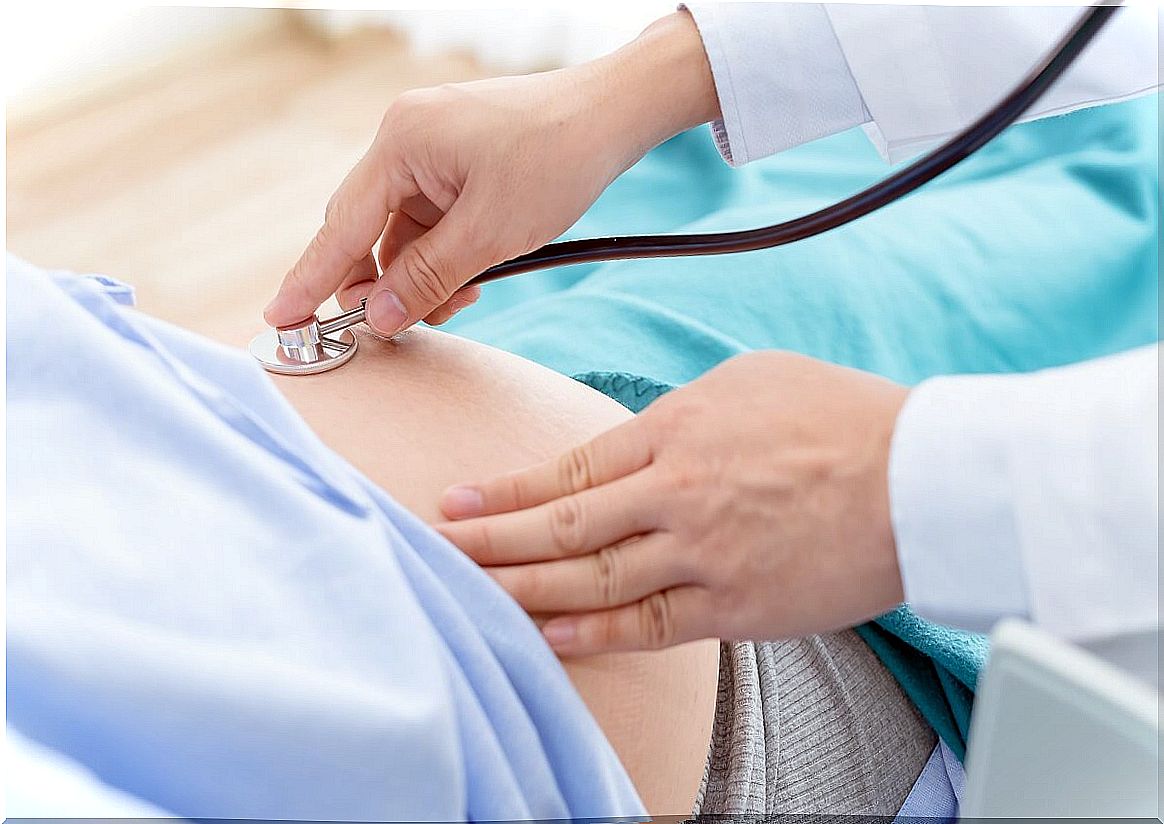Embolism During Pregnancy
When we talk about an embolism, the image of a blood clot circulating through the arteries or veins always comes to mind. But in the case of embolism during pregnancy, the object that causes the problem is the amniotic fluid.
It is a disease with a very low prevalence among pregnant women, but for that reason it cannot be ruled out. Although less than one woman for every 60,000 presents it, its appearance forces us to take quick and accurate measures to save both lives.
What is embolism during pregnancy?
The condition of embolism in pregnancy, also known as ‘amniotic fluid embolism’ or ‘anaphylactic pregnancy syndrome’, is the appearance of amniotic fluid within the mother’s blood. It is not always the fluid itself that enters the stream, but is sometimes generated by cells of the fetus.
The condition to be met is the point of contact between the maternal blood and the amniotic fluid. This can happen in a normal vaginal delivery or in a cesarean section as well. It is less common to arise from an amniocentesis, but it is among the complications derived from the procedure.
In amniocentesis, a doctor inserts a needle-like device into the pregnant woman’s belly to take a biopsy of the amniotic fluid. This happens in vivo , that is to say that the gestation follows its normal course. If sufficient precautions are not taken, some of the fluids may come into contact.
In reality, the pathophysiology of the disorder is not yet known. This means that science has not figured out why the mother reacts so badly to her own amniotic fluid. It also does not happen in all women, which further complicates the picture.

Symptoms of stroke during pregnancy
Amniotic fluid embolism leads to fatal outcomes if not treated in time. The last stage of the disease is cardiorespiratory arrest caused by an allergic reaction in the mother. It is as if it were an anaphylaxis of excessive proportions.
Before reaching that point, the starting signs are as follows:
- Mother’s nausea and vomiting
- Seizures: This can confuse doctors with pre-eclampsia or eclampsia. The fact that blood pressure values do not tend to rise is usually differential.
- Fetal distress : This is the situation where the fetus shows signs of being under vital stress. The heartbeat can be accelerated or slowed down, as well as breathing, with relaxation of the sphincters inside the belly. The expected movements also change and the child tends to stay more still than usual for gestational age.
The severity is such that it is estimated that almost half of those affected die. Those that do not have the possibility of complications with bleeding associated with childbirth and the placenta. In the long term, blood loss leads to anemia.
Treatment
The initial treatment for embolism during pregnancy, when detected, consists of supporting the woman with anaphylaxis. This is accomplished with measures that are common to other giant allergic reactions.
The supply of oxygen is key to feeding the respiratory dynamics that usually increases at the beginning to enter a stage of depression later. This requires hospitalization in intensive care, before the possibility of reaching the use of an artificial respirator.
Second, fluid control is critical. Not only are intravenous lines placed to inject the fluid that sustains the pumping of the heart, but also cardiovascular parameters are monitored and medications that stimulate the heart muscle are administered so as not to enter a state of shock .
The use of drugs in these pregnant women is guided more by the risk / benefit ratio than by their possible teratogenic effects. In general, the pregnancy embolism appears towards the end of it and the children are already fully formed in their organs.

What happens to the child at birth in these conditions?
The situation for babies born to mothers with amniotic fluid embolism is complicated. If they have gone through stages of fetal distress, neonatologists are urged to recover vital signs.
Resuscitation may be necessary at the time of delivery or cesarean section, administration of body fluids and oxygen support. Some babies are born in cardiorespiratory arrest and others with a severe depression of their ventilatory mechanics.
The subsequent monitoring is imposed for long days. Having been through such a traumatic situation, specialized follow-ups are required to assess long-term complications. Many times it is not known how long it was without oxygen supply inside the belly and in what state the nervous system has been.
How to prevent pregnancy embolism?
It is almost impossible to prevent this pathology. There are no elements that reduce the risk or measures that can be taken that reduce the possibility of becoming ill in the mother.
What is essential is specialized monitoring by obstetricians. Routine pregnancy controls are the only low-cost and safe way to contain possible complications of any kind that may arise.









